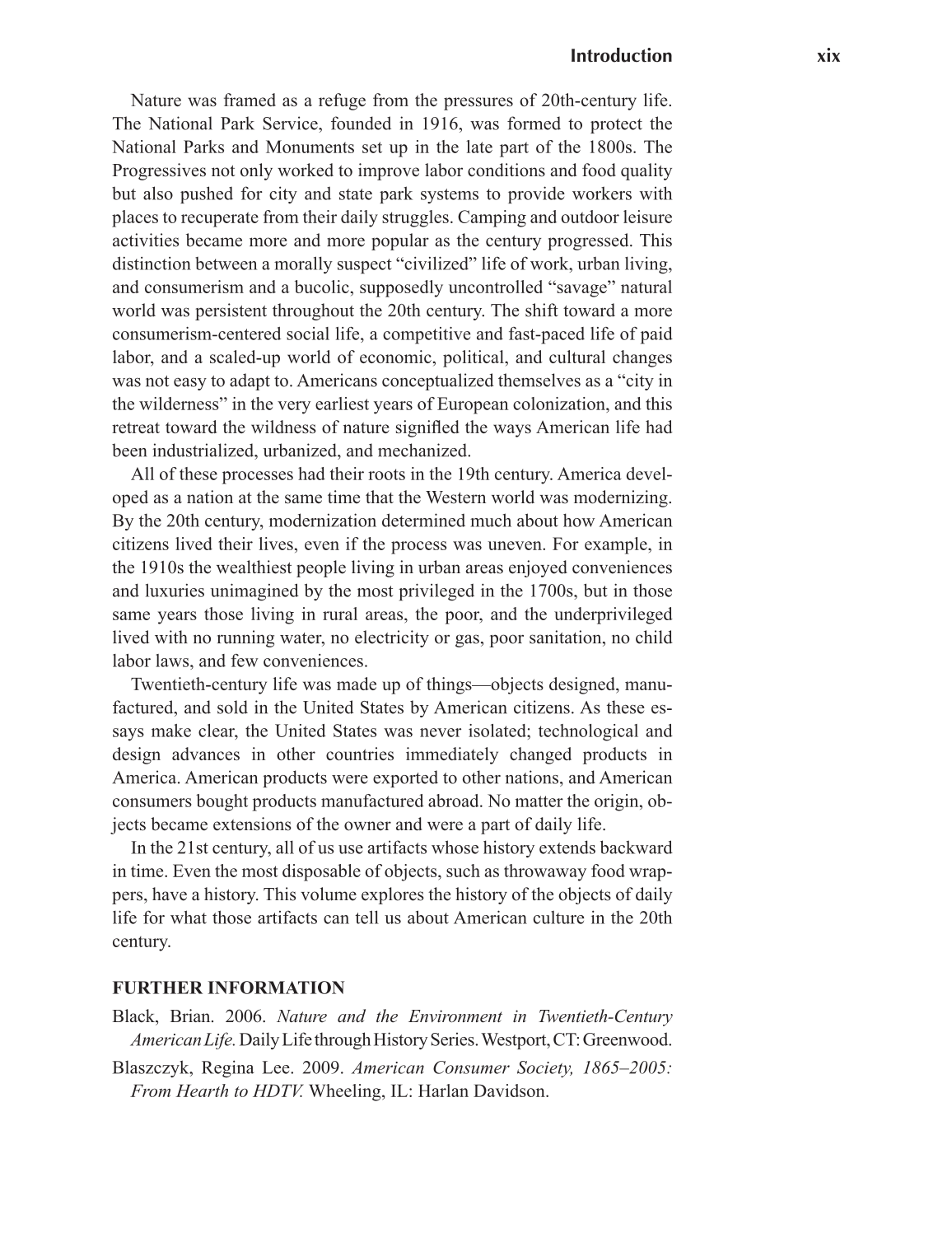Introduction xix
Nature was framed as a refuge from the pressures of 20th-century life.
The National Park Service, founded in 1916, was formed to protect the
National Parks and Monuments set up in the late part of the 1800s. The
Progressives not only worked to improve labor conditions and food quality
but also pushed for city and state park systems to provide workers with
places to recuperate from their daily struggles. Camping and outdoor leisure
activities became more and more popular as the century progressed. This
distinction between a morally suspect “civilized” life of work, urban living,
and consumerism and a bucolic, supposedly uncontrolled “savage” natural
world was persistent throughout the 20th century. The shift toward a more
consumerism-centered social life, a competitive and fast-paced life of paid
labor, and a scaled-up world of economic, political, and cultural changes
was not easy to adapt to. Americans conceptualized themselves as a “city in
the wilderness” in the very earliest years of European colonization, and this
retreat toward the wildness of nature signified the ways American life had
been industrialized, urbanized, and mechanized.
All of these processes had their roots in the 19th century. America devel-
oped as a nation at the same time that the Western world was modernizing.
By the 20th century, modernization determined much about how American
citizens lived their lives, even if the process was uneven. For example, in
the 1910s the wealthiest people living in urban areas enjoyed conveniences
and luxuries unimagined by the most privileged in the 1700s, but in those
same years those living in rural areas, the poor, and the underprivileged
lived with no running water, no electricity or gas, poor sanitation, no child
labor laws, and few conveniences.
Twentieth-century life was made up of things—objects designed, manu-
factured, and sold in the United States by American citizens. As these es-
says make clear, the United States was never isolated; technological and
design advances in other countries immediately changed products in
America. American products were exported to other nations, and American
consumers bought products manufactured abroad. No matter the origin, ob-
jects became extensions of the owner and were a part of daily life.
In the 21st century, all of us use artifacts whose history extends backward
in time. Even the most disposable of objects, such as throwaway food wrap-
pers, have a history. This volume explores the history of the objects of daily
life for what those artifacts can tell us about American culture in the 20th
century.
FURTHER INFORMATION
Black, Brian. 2006. Nature and the Environment in Twentieth-Century
American Life. Daily Life through History Series. Westport, CT: Greenwood.
Blaszczyk, Regina Lee. 2009. American Consumer Society, 1865–2005:
From Hearth to HDTV. Wheeling, IL: Harlan Davidson.




























































































































































































































































































































































































